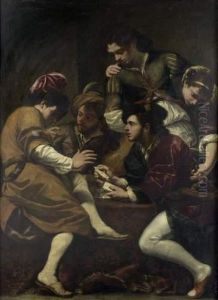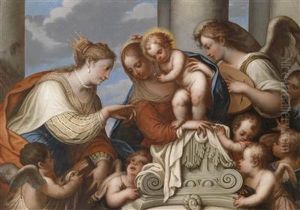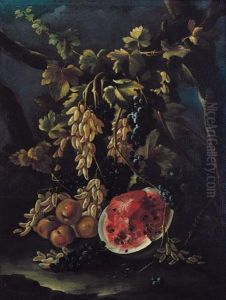Giovanni Battista Boncori Paintings
Giovanni Battista Boncori was an Italian artist born in 1643 in Faenza, a city in the region of Emilia-Romagna. Although not as widely recognized as some of his contemporaries, Boncori made a significant contribution to the art of the Baroque period, which was characterized by dramatic expression, rich coloration, and dynamic composition.
Boncori's work as a painter was largely influenced by the dramatic styles of Caravaggio and the Bolognese school. He was known for his religious paintings, which were often commissioned for local churches and cathedrals. His works are characterized by their emotive intensity, strong chiaroscuro, and the realistic portrayal of figures. Boncori's ability to convey the spiritual fervor and the humanity of his subjects won him commissions and recognition within his region.
Unfortunately, much of Boncori's life and work has been overshadowed by more prominent figures of the time. As a result, detailed records of his artistic career and personal life are sparse. What is known is that he worked primarily in Faenza and possibly in nearby cities, contributing to the local artistic landscape during a period rich in cultural and artistic achievements.
Giovanni Battista Boncori passed away in 1696. While he may not have achieved the same level of fame as some of his contemporaries, his paintings remain a testament to the richness of the Baroque era in Italy. Today, his works are held in regional museums and churches, and they continue to be studied by those interested in the art and culture of the period.


